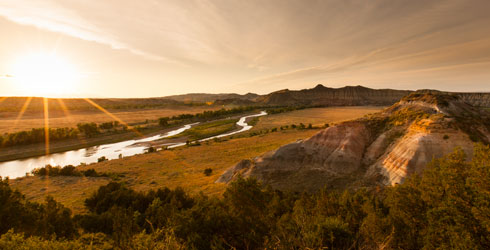Does North Dakota Really Need To Spend $2 Billion On Conservation In The Next Decade?

Environmental groups are dissatisfied with the Outdoor Heritage Fund created by the legislature which diverts up to $30 million per biennium to a fund overseen by a board that shovels the money out to conservation projects (which, at first blush, don’t always seem to have a lot to do with conservation). So they want a fund of their own that diverts more money, with no cap, and has fewer restrictions on how it can be spent.
In fact, the proposed ballot measure (read it here) would divert nearly $5 billion over its 25 year life span, and roughly $2 billion in the next decade alone, which is the thrust of the argument against the measure from an impressive group of politically diverse groups.
The chart below is from North Dakotans for Common Sense Conservation, which counts as its members (I said it was impressive) the North Dakota Farmers Union, the North Dakota Farm Bureau, the North Dakota Stockmen’s Association, the North Dakota Grain Growers Association, the North Dakota Corn Growers Association, the North Dakota Soybean Growers Association, the Ethanol Producers of North Dakota, the United States Durum Growers Association, the North Dakota School Boards Association, the North Dakota League of Cities, the North Dakota Association of Counties, the Landowners Association of North Dakota, the Northwest Landowners Association, the Greater North Dakota Chamber of Commerce, the Bismarck-Mandan Chamber of Commerce, the Grand Forks-East Grand Forks Chamber of Commerce, the Minot Area Chamber of Commerce, the Associated General Contractors of North Dakota, the North Dakota Petroleum Council, the Lignite Energy Council, the North Dakota Association of Oil and Gas Producing Counties, and the Utility Shareholders of North Dakota.
That’s a lot of accumulated political clout, and they point out that the conservation measure seems to be mostly supported by out of state interests. “Reports filed with the Secretary of State’s office show the group received 96 percent of its contributions for 2012 and 2013 — $662,000 — from groups outside the state,” reads a press release from the group. “Their campaign is also being run by the Washington, D.C., firm Hamburger Strategies LLC.”
This is a smart tactic, because it comes juxtaposed with stories like this one wherein western North Dakota officials are quoted saying they are “down here on our knees begging” the legislature for more money.
Personally, I think it would be fair to accuse some of these local officials of rank opportunism (they hold the oil impacts trump card and they seem intent on playing it, over and over again), and there seems to be little interest in exploring how all the new revenues from an expanded western North Dakota tax base is going, but that’s beside the point for the purposes of this post.
Most in North Dakota would probably agree that the state needs to spend more on addressing oil impacts in the western part of the state, and most in North Dakota probably don’t see hundreds of millions per biennium as an appropriate amount of money to earmark to conservation.
Especially considering that the measure would mandate that most of the money collected be spent every year whether that amount of conservation spending is needed of not. From the text of the measure, “The commission must allocate no less than seventy-five percent nor more than ninety percent of the revenue deposited in the fund on an annual basis.”
North Dakota doesn’t need that much conservation spending, and the specifics of the measure make it clear that lining the pockets of conservation groups, rather than actual conservation, is the more specific goal.





